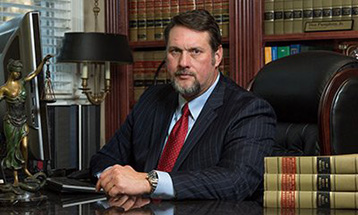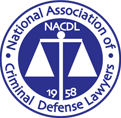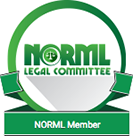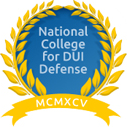- DUI
- Criminal Defense
- Florida DUI
- Traffic Offenses
- Drug Charges
- Marijuana Charges
- Violent Crimes
- Domestic Violence
- Temporary Injunctions
- Weapons Charges
- Theft Crimes
- White Collar Crime
- Juvenile Offenses
- Sex Crimes
- Violation of Probation
- Early Termination of Probation
- Seal or Expunge Criminal Record
- Criminal Appeals
- US Federal Offenses
- Misdemeanor Charges
- Felony Charges
- Co-Defendant Cases
- College Student Defense
- College Student Hearings
- FSU Students
- FAMU Students
- Florida Panhandle Arrests
- Extradition to Florida
- Bench Warrants / Warrants
- Emergency Bond Hearings
- Gambling Charges
- Drone Arrests
- Marsy’s Law
- UAS Infractions
- Introduction of Contraband
- Lying to Police
- Locations
- Case Results
- Our Firm
- Media
- Resources
- Blog
- Contact Us
Florida’s Media Coverage of Criminal Trials
April 30, 2024 Don Pumphrey, Jr. Criminal Defense Social Share
Each state has its rules and regulations regarding legal procedures to ensure that the rights of each person involved in the case are protected. One area of legal proceedings that has been up for debate throughout the years is the presence of media coverage inside the courtroom. Federal legal procedures remain closed to the public, with little change to the prevention of cameras.
However. states like Florida have opted for allowing press inside trials or court hearings. There has been various high-profile cases in Florida over the years that have gathered exponential attention from the press, such as with the case of Casey Anthony and George Zimmerman. With landmark cases such as Chandler, the presence of the media at criminal trials became near imminent.
Defense lawyers for an upcoming trial have made a request to close the criminal proceedings to the public. This is being viewed as unusual, given the extensive broadcast of Florida criminal trials. This page will give you definitions and insight into the use of communication technology in a courtroom, the history of allowing media inside a courtroom, and the grounds that a judge may deny a motion to prevent the media broadcasting of a court procedure. We will also add the latest information relating to the upcoming trial for the 1983 Tampa murders.
Use of Communication Technology Rule in a Courtroom
The relative definitions for communication technology are outlined as follows:
- Audio communication technology – Electronic devices, systems, applications, or platforms that permit all participants to hear and speak to all other participants in real time.
- Audio-video communication technology – Electronic devices, systems, applications, or platforms that permit all participants to hear, see, and speak to all other participants in real time.
- Communication technology – Audio communication technology or audio-video communication technology.
- Court official – A county or circuit court judge, general magistrate, special magistrate, or hearing officer.
Under Fla. R. Crim. P. 3.116, with the court’s own motion or through the written request from either party, a judge can direct the use of communication technology by one or more parties for attendance at a pretrial conference. However, a judge is required to give notice to each party and consider any objections to the use of communication technology. The direction to use communication technology over the objection of parties will be in the discretion of the trial court, except as otherwise noted below:
- Testimony
- A judge can generally allow testimony to be taken through communication technology if all parties consent;
- Any party who wishes to present testimony through communication technology must first contact all parties for consent, along with a motion setting forth worthy cause for the use of communication technology for testimony;
- The oath must be administered for testimony taken through communication technology in the manner prescribed under 530(b)(2)(B);
- The defendant must make an informed waiver of any otherwise applicable confrontation rights.
- Burden of Expense – The cost for the use of communication technology falls on the responsibility of the requesting party, unless otherwise directed by the court.
Chandler v. Florida (1981)
At one point in the 1960’s, cameras were completely banned from being inside the courtroom. Florida started a pilot program in the 1970’s to allow broadcast media to cover judicial proceedings in all state courts, without the trial participant’s consent.
The case Chandler v. Florida went to the Supreme Court due to both convicted defendants claiming that the cameras being present inside the courtroom made it difficult for an impartial jury. In 1981, the Supreme Court ruled that the Constitution does not prevent the broadcasting of criminal trials. They further found that “the danger that jurors might be affected by the presence of cameras in a given case was not enough to justify an outright ban on broadcast coverage.”
Due to the decision in Chandler, the American Bar Association (ABA) revised Rule 3A(7) of the Code of Judicial Conduct to allow cameras in the courtroom under guidelines that ensure the fair administration of justice. According to the Florida Bar, all states aside from Indiana, Mississippi, South Dakota, and the District of Columbia permit cameras. While most states allow cameras in all courts, others limit electronic media to proceedings where witnesses and jurors are not present.
Current State of Cameras in Florida Courtrooms
In modern day courtrooms, it is much more common for there to be media broadcast of an entire court proceeding. This is especially true given the continuous increase in technology efficiency. While some states like Delaware and Louisiana are extremely restrictive in allowing cameras, states like Florida are much more lenient.
When determining whether camera access is allowed inside a courtroom, a judge must abide by the regulations under the renumbered Florida Rule of Judicial Administration 2.450. Additionally, the court stated the following:
“Trial participants seeking to prohibit camera coverage must show that such coverage will have a substantial effect upon the particular individual which would be qualitatively different from the effect on members of the public in general and such effect will be qualitatively different from coverage by other types of media.”
The specific standards on technological coverage of judicial proceedings are codified under Rule 2.450 states the following:
- Electronic and Still Photography Allowed – The presiding judge is subject to the authority to:
- Control the conduct of proceedings before the court;
- Ensure decorum and prevent distractions; and
- Ensure the fair administration of justice in the pending cause, electronic media and still photography coverage of public judicial proceedings in the appellate and trial courts of the state shall be allowed in accordance with the following guidelines.
- Equipment and Personnel –
- At least one (1) portable TV camera operated by not more than one person is allowed during trial and appellate proceedings. The presiding judge holds the authority and discretion for how many cameras are to be permitted in any proceeding of trial or appellate court;
- Not more than one (1) still photographer, using no more than two (2) still cameras, shall be permitted in a trial or appellate court;
- The audio pickup for all media purposes must be accomplished using existing systems present in the courtroom. Not more than one (1) audio system for radio broadcast purposes shall be permitted in any proceeding of trial or appellate court. If there is not suitable system available, then any microphones or related audio equipment must be unobtrusive and located in places designated in advance of any proceeding by the chief judge of the judicial circuit or district in which the court facility is located; and
- Any “pooling” arrangements among the media due to the limitations on equipment and personnel falls under the sole responsibility of the media without calling upon the presiding judge to mediate any disputes. If there is no agreement made, the presiding judge shall exclude all contesting media personnel from the proceeding.
- Sound and Light Criteria –
- Only photographic television and audio equipment that does not put off any distracting sounds or lights is permitted to be used for coverage of a judicial proceeding. There is no artificial lighting device allowed in connection with the TV camera;
- Only “still” camera equipment that does not produce distracting sound or light is permitted for use to cover judicial proceedings. No artificial lighting device is allowed in connection with a still camera; and
- It shall be the affirmative duty of media personnel to demonstrate to the presiding judge adequately in advance of the proceeding that their equipment meets all sound and light criteria, with the failure to obtain judicial approval to preclude its use in any proceeding.
Other important regulations under Rule 2.450 include:
- Movement during proceedings – No news media equipment shall be placed or removed from a courtroom or court facility except before commencement or after adjournment of proceedings each day.
- Conferences of counsel – There is no audio pickup or broadcast of conferences between lawyers and their clients, between co-counsel of a client, or between counsel and the presiding judge, to protect the attorney-client privilege and the effective right to counsel.
- Impermissible use of media material – None of the film, videotape, still photographs, or audio reproductions developed during or by virtue of a judicial proceeding coverage is considered inadmissible as evidence in the proceeding out of which it arose, in any proceeding subsequent or collateral thereto, or upon retrial or appeal of such proceedings.
- Appellate Review – When either party presents an order to exclude electronic media coverage from any proceeding, excluding coverage of a particular participant, or any other matters arising out of these standards shall be pursuant to Florida Rule of Appellate Procedure 9.100(d).
Important: Rule 2.450 does not authorize photography, recording, or broadcasting in the corridors, hallways, or lobbies of a court facility, due to actions in these areas has the potential to disrupt other court proceedings.
To read Rule 2.450 in its entirety and how it affects judicial proceedings in the 2nd Judicial Circuit Court (in which Pumphrey Law represents criminal cases), refer to the website page here.
On What Grounds Can a Judge Deny a Motion to Prevent Media Coverage?
It’s worth noting that in certain cases, a defendant or their attorney can request for no media in the courtroom during trial. While it is rare, a motion can be filed to request the court take into consideration whether media coverage will affect an upcoming trial.
The presiding judge may deny a motion to prevent media coverage on any of the following grounds:
- First amendment rights – There is no part of the Constitution that prohibits cameras in courtrooms, therefore the presence of media does not automatically violate the defendant’s rights.
- Transparency and public interest – The presiding judge may assert that media coverage of the trial ensures transparency, educates the public, and fosters trust in the criminal justice system.
- Minimal disruption – Media coverage may still be allowed if it does not significantly disrupt the proceedings or influence the jury.
- Balancing interests – The presiding judge will weigh the defendant’s right to a fair trial against the public’s right to information.
- Case-specific factors – The presiding judge will consider the circumstances of each individual case to decide whether media coverage should be permitted.
Example Case – Upcoming Trial for 1983 Tampa Murders
Ahead of the trial for the 1983 Tampa murders that resulted in Robert DuBoise’s exoneration, the defense counsel made the unusual request of close the court case from the public. According to the Tampa Bay Times, Assistant Public Defender Jamie Kane made the “unusual request in a written motion” filed regarding the trial of defendant Amos Robinson.
“This case has been the subject of unprecedented and highly prejudicial publicity and media attention locally and legislatively at the state level,” Kane wrote. “The history of this case goes back about 40 years, and because of the unique developments that led to the indictments against Robinson, the media coverage continues.”
The defense is concerned with whether they can find an impartial jury due to the case’s high publicity. After spending nearly four decades behind bars, new DNA evidence found Duboise not guilty of 18-year-old Barbara Grams’ death. The new suspects linked to the murder are Robinson and Abron Scott. Both defendants were also linked to the unsolved murder of Linda Lansen.
The motion claimed that every court proceeding in the case “however minor or consequential,” has generated “extensive coverage.”
“It anticipated that the press will continue to be active and aggressive in the coverage of all events and proceedings in this case,” Kane wrote.
He further addressed how these discussions can lead to an “oppressive and impossible environment” from the publicity, which could impact the court’s ability to find a jury either locally or statewide.
Florida has had its fair share of high-profile criminal cases that receive substantial amounts of media attention. However, it is unusual for a defense counsel to request to close the court. One potential solution would be to pick a jury from outside the local area such as with the 2013 trial of Dontae Morris.
We will update with the court’s decision on the motion.
Contact the Criminal Defense Attorneys with Pumphrey Law
If you or someone you know was recently arrested for a suspected crime, consider hiring a criminal defense lawyer in Tallahassee, FL. There may be avenues or defense strategies available to help defend your case. Whether you have been accused of a DUI offense, domestic violence crime, or any other unlawful act in Leon County, you should feel confident that your lawyer will provide you with top-quality legal advice. The team with Pumphrey Law Firm has decades of experience representing citizens all the Florida Panhandle.
We can provide you with a free consultation when you call us at (850) 681-7777.










